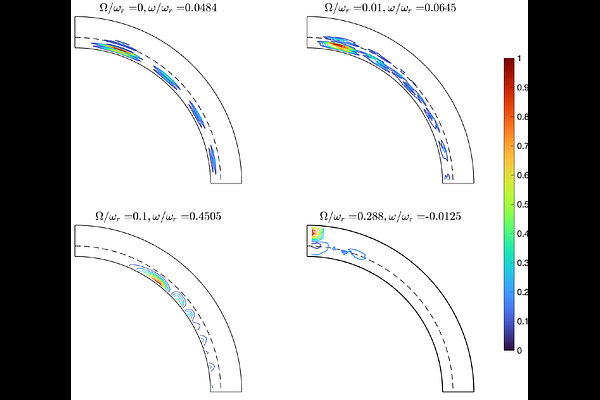Propagation and transmission of Jupiter's internal waves

Propagation and transmission of Jupiter's internal waves
Yuru Xu, Xing Wei
AbstractObservations from the Juno spacecraft show that Jupiter has a large dilute core rather than a compact core. To investigate the effects of different core structures on wave propagation and transmission in Jupiter's interior, we consider three models: (1) an isentropic sphere, (2) an isentropic envelope with a rigid core, and (3) an isentropic envelope with a dilute core. We study the propagation and transmission of p modes (sound waves), g modes (gravity waves), r modes (inertial waves), and GIWs (gravito-inertial waves) by solving the linear equations of a compressible, self-gravitating, uniformly rotating polytropic model, fully taking into account the the effects of Coriolis force but neglecting centrifugal flattening. Our results show that energy flux is primarily carried by fast waves with higher frequencies whereas kinetic energy by slow waves with lower frequencies. Rotation has a greater effect on non-axisymmetric modes than on axisymmetric ones. In model 2, rigid core facilitates propagation of r modes. In model 3, rotation enhances the transmission of GIWs across the interface between the dilute core and the isentropic envelope, particularly at high latitudes. This suggests that Jupiter's internal structure may be inferred by detecting the oscillation signals in its polar regions.